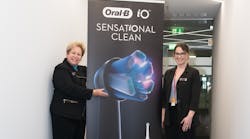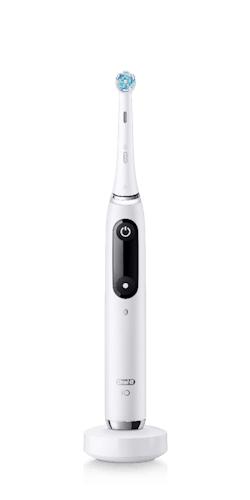One of the most important roles of dental professionals is our ethical responsibility to maintain the health of a patient’s dentition for as long as possible. However, there are an overwhelming number of cases of preventable dental ailments, such as caries and periodontal disease, burdening our population. If approximately 92% of adults aged 20 to 64 have experienced dental caries and 46% have a form of periodontitis, are we doing our job?1,2
There is more to oral health prevention than mentioning flossing or handing someone a free toothbrush. It involves consistency and hard work to engage patients and increase their compliance. Consistently spending one-on-one time with patients with a mirror, disclosing solution, and oral health aids is necessary to improve their compliance and oral health.3 This stage of the treatment should be prioritized before “active” therapy begins, meaning that the dental professional should start with oral hygiene education instead of implementing it at the end of an appointment when time may be running short.4
There are several evidence-based interventions, such as toothbrushing and interproximal cleaning, that demonstrate effective plaque removal and thus can help prevent caries and periodontal disease. Although interproximal cleaning may be less of a habit among patients, toothbrushing is a common daily act for most people. Therefore, we need to capitalize on this method of biofilm removal while working to strengthen compliance in interproximal cleaning.
Not all methods are the same
Interproximal cleaning is critical to the prevention of caries and the reduction of gingivitis. Floss is not the only available tool for patients to clean interproximally, and it may not even be the best option, depending on a patient’s needs.5 Other devices are also available, such as interproximal brushes and wooden interdentals. When used properly, these options can have better outcomes than floss.6 Therefore, it is crucial that oral hygiene aids are tailored to each patient as well as demonstrated and reinforced frequently.
The same process also applies to toothbrushing. Different options exist for toothbrushes, ranging from manual to various electric ones. Within the electric toothbrush category, there are two main types of technologies: oscillating-rotating and sonic. Also impacting a toothbrush’s effectiveness are the size of the handle, length, density, stiffness of the bristles, and size and shape of the head itself. These aspects are important to consider when recommending a brush for a patient. It’s even more important to work with patients with the same brushes they’re using at home while instructing them on proper home care.
The body of scientific evidence suggesting that oscillating-rotating toothbrushes are more effective than manual toothbrushes and other electric toothbrushes is vast and has recently expanded.7,8 In a systematic review published in February 2020 in the Journal of the American Dental Association (JADA), my colleague from the University of Alberta, Liran Levin, DDS, and I performed a meta-analysis comparing plaque and gingival outcomes between sonic and oscillating-rotating electric toothbrushes.8 The results showed oscillating-rotating electric brushes remove more plaque and reduce the number of bleeding sites more than the sonic electric brush.8 In addition, these findings are supported by Procter & Gamble’s own meta-analysis of their oscillating-rotating technology, which was recently published in the American Journal of Dentistry.9 Though this may encourage clinicians to recommend this type of brush, it is imperative that if we recommend a toothbrush with oscillating-rotating technology, we show patients how to use it properly and effectively.
One of the latest innovations
Recently, I was invited to Germany for a prelaunch of Oral-B’s latest innovation, the Oral-B iO toothbrush (figure 1). This is an exciting innovation for dental professionals as it incorporates many aspects that we struggle with when treating and educating our patients. First, Oral-B iO has a linear magnetic drive system that concentrates energy where it is needed the most—at the bristle tips (figure 2). The linear magnetic drive also results in optimized acoustics and an appealing smooth brushing experience. Additionally, the drive system produces an oscillating rotating motion that has proven efficacy for enhanced plaque removal.8 Moreover, although Oral-B’s electric brush had a pressure sensor in previous models, it only sensed when the patient applied excessive pressure. Today, we see patients who are scared to brush their gums and therefore they underbrush, leaving behind plaque that leads to inflammation.
The Oral-B iO technology has been adapted with a smart pressure sensor that senses when patients are not using enough pressure or when they are using too much pressure. This coaches the user to brush in the optimal pressure range for safe and effective plaque removal. Furthermore, the round head allows the bristles to penetrate along the gingival margin and proximally, and the interactive display times the length of the brushing cycle for two minutes minimum, which is important for improving compliance. One of the most exciting details of the new brush is the 3-D tracking and artificial intelligence that connects the brush via Bluetooth to the Oral-B app. This tracks where the patient is brushing by sextant and tooth surface, for how long, and with how much pressure.
With this technology, dental health professionals can work with their patients to determine whether they are brushing frequently and effectively and to assess their overall compliance.10 The tracking of information can also help with accountability, and even explain when gingival recession increases, or when there is improvement in an area with a periodontal pocket. If the technology from the app is used to its maximum potential, patients will be expected to bring the data to each appointment. In theory, this could limit the common excuses for noncompliance, such as “I forgot” or “I didn’t know.”11
Not only does this technology work with clinicians to educate patients and inform them about their oral hygiene, it also empowers them to become accountable for their oral health. Furthermore, when patients improve their oral hygiene, this will not only help decrease the burden of disease on the population, but it will help improve the success of in-office treatments.12
As we fulfill our ethical and professional obligation to prevent oral disease in our patients, we are required to practice evidence-based dentistry. We are fortunate that we understand the plaque-bacteria etiology behind caries and periodontal disease, and we’re equally as fortunate to have toothbrushes and interproximal aids to help patients remove this biofilm daily. It’s up to us to assist and guide our patients in the proper use of these tools, increase their compliance, and ensure healthy smiles!
References
1. Dental caries (tooth decay) in adults (age 20-64). National Institute of Dental and Craniofacial Research. Updated July 2018. Accessed March 24, 2020. https://www.nidcr.nih.gov/research/data-statistics/dental-caries/adults
2. Eke PI, Dye BA, Wei L, et al. Update on prevalence of periodontitis in adults in the United States: NHANES 2009 to 2012. J Periodontol. 2015;86(5):611-622. doi:10.1902/jop.2015.140520
3. Clark D, Levin L. Modifying risk factors–The next step. Oral Health Prev Dent. 2018;16(1):5. doi:10.3290/j.ohpd.a39921
4. Echeverría JJ, Echeverría A, Caffesse RG. Adherence to supportive periodontal treatment. Periodontol 2000. 2019;79(1):200-209. doi:10.1111/prd.12256
5. Levin L. Editorial: To floss, or not to floss? Is that the question? Quintessence Int. 2016;47(8):635. doi:10.3290/j.qi.a36684
6. Worthington HV, MacDonald L, Poklepovic PT, et al. Home use of interdental cleaning devices, in addition to toothbrushing, for preventing and controlling periodontal diseases and dental caries. Cochrane Database Syst Rev. 2019;10(4):CD012018. doi:10.1002/14651858.CD012018.pub2
7. Clark-Perry D, Levin L. Systematic review and meta-analysis of randomized controlled studies comparing oscillating-rotating and other powered toothbrushes. J Am Dent Assoc. 2020;151(4):265-275. doi:10.1016/j.adaj.2019.12.012
8. Yaacob M, Worthington HV, Deacon SA, et al. Powered versus manual toothbrushing for oral health. Cochrane Database Syst Rev. 2014;(6):CD002281.
9. Grender J, Adam R, Zou Y. The effects of oscillating-rotating electric toothbrushes on plaque and gingival health: A meta-analysis. Am J Dent. 2020;33(1):3-11.
10. Hughes B, Heo G, Levin L. Associations between patients’ understanding of periodontal disease, treatment compliance, and disease status. Quintessence Int. 2018;49(1):17-23.
11. Ashkenazi M, Bidoosi M, Levin L. Factors associated with reduced compliance of children to dental preventive measures. Odontology. 2012;100(2):241-248. doi:10.1007/s10266-011-0034-1
12. Levin L. Prevention–The (sometimes-forgotten) key to success. Quintessence Int. 2012;43(9):789.
Editor’s note: This article is sponsored by Procter & Gamble. Content has been reviewed for editorial integrity per RDH guidelines. For more information on RDH standards of editorial excellence, see rdhmag.com/page/submission-guidelines.
Danielle Clark-Perry, MSc, RDH, is a research assistant and clinical instructor at the University of Alberta. She has published 15 papers in the scientific literature and a book chapter. Clark-Perry has been invited to serve on the editorial board of the International Dental Journal and to be an associate editor for Clinical and Experimental Dental Research. She has received several awards, including the Sunstar World Dental Hygienist Award for Research.
Disclosure: The author has a financial relationship with Procter & Gamble by providing occasional lectures.









